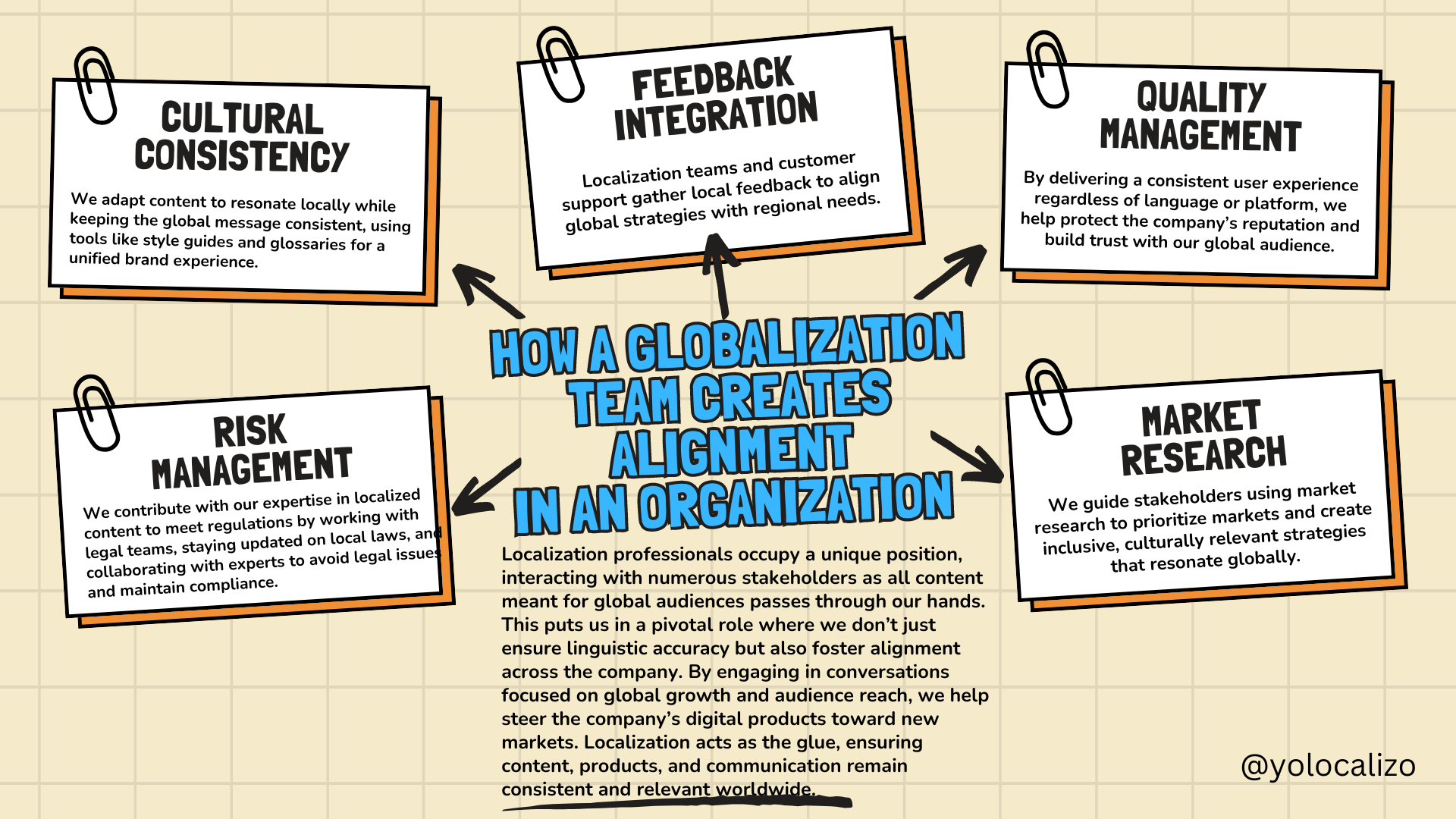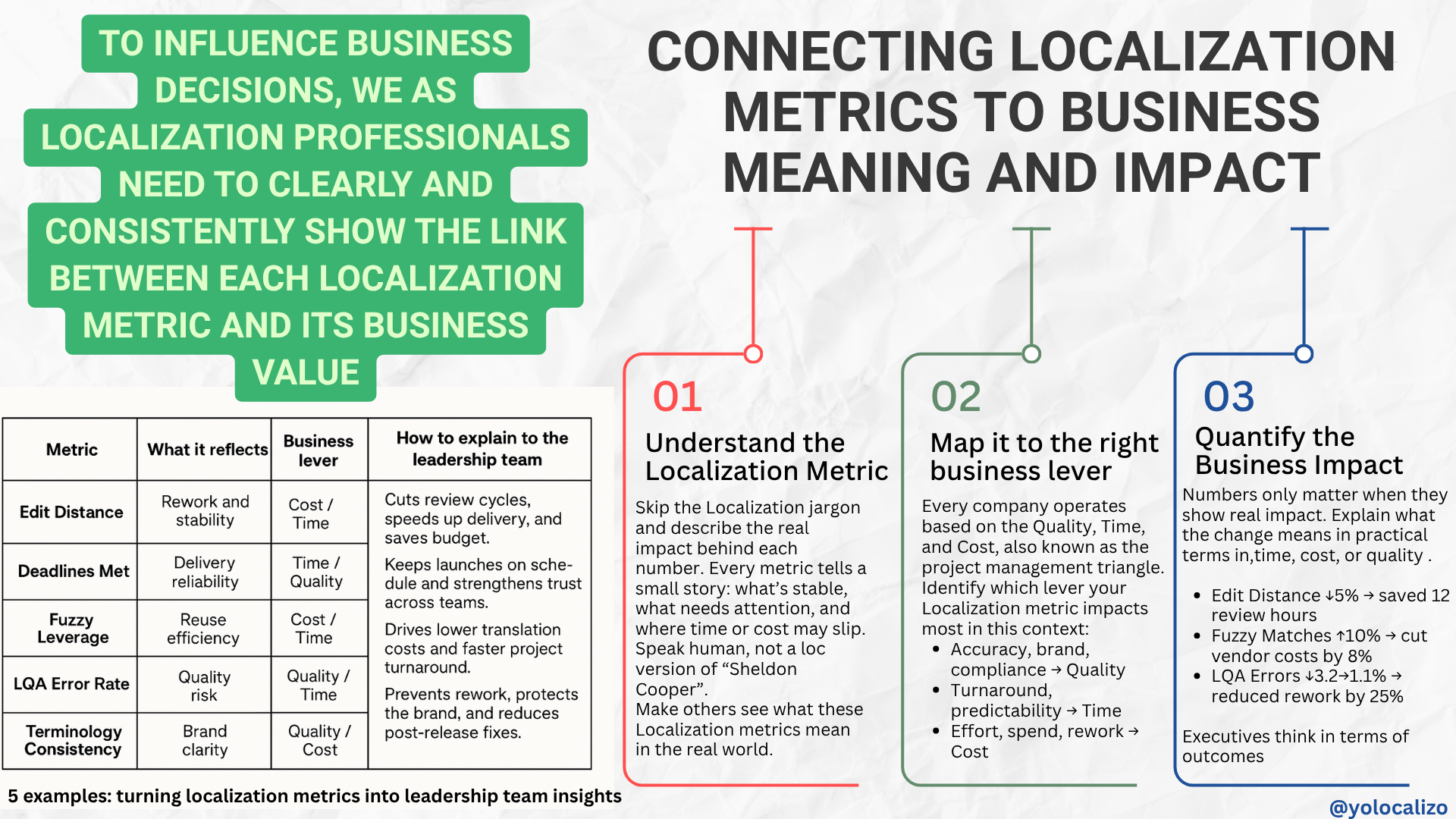Localization governance models that withstand change
I’ve lost count of how many times I’ve seen localization programs reshuffled after a company reorg. Even if the localization team isn’t directly affected, things can still shake quickly.
One month everything runs smoothly priorities are clear, budgets are tracked by Localization PMs, and decisions are aligned with product owners and finance partners. Then the org chart shifts. Sponsors or main contacts move. Teams merge. Suddenly, the processes you worked so hard to integrate no longer fit the new structure.
That’s the moment when governance gets tested.
In many organizations, localization governance often resides in the minds of a few individuals. They become the institutional memory of the program ….until they leave. When that happens, decisions slow down, visibility disappears, and priorities collide. The system turns reactive instead of strategic.
It’s not unusual to have one person who knows how to request localization keys, how RFPs work, or who to contact when a release is delayed due to missing strings or handoffs.
You rarely notice weak governance until it starts to hurt. For example
· When ownership isn’t clear, budgets become moving targets, every reorg reopens funding conversations you thought were settled.
· When escalation paths are not in place, localization teams end up negotiating priorities one ticket at a time.
· When metrics aren’t anchored in governance, data loses value , everyone measures something different, and leadership stops trusting the numbers.
Over time, that noise changes how localization is perceived. It stops being seen as a structured business function and starts looking like an internal service desk.
Strong governance reverses that. It makes accountability visible, decisions predictable, and success measurable.
It turns localization from a dependency others work around into an operating system others rely on.
That’s why governance matters.
Even if you’ve built a strong localization framework, it only works if the rest of the organization understands and respects it. When governance lives only inside the localization team, it becomes fragile the moment roles, teams, or priorities shift.
Good localization governance keeps the program functional, visible, and credible no matter how the org chart moves. So let’s see in the next paragrapahs how to build one
Governance as the program’s operating system
Think of governance as the operating system of localization. It defines how decisions are made, how accountability works, and how information flows between teams. When it’s weak, even small organizational changes can cause confusion. When it’s strong, the program keeps running through leadership changes, mergers, or new product models.
Good governance is not a slide deck or a policy binder. It’s a living system made of a few solid components:
Click HERE to download the graphic
1. Clear ownership and accountability
Governance starts with knowing who owns what. Everyone knows who decides what, from budget approvals to tool selection and quality targets. No duplicated efforts. No unclear dependencies.
2. Documented roles and responsibilities
Ownership isn’t enough if the surrounding roles aren’t visible. Each process translation, LQA, internationalization etc has visible owners and contributors. This clarity prevents bottlenecks and confusion when people move or teams merge.
3. Defined escalation paths
Not every decision will be clear-cut. Governance defines how conflicts are handled and where alignment happens. When priorities or budgets collide, there’s a clear route to resolve issues. Governance absorbs conflict instead of letting it stall projects.
4. Regular planning rhythm
Governance should include a simple, predictable routine. Localization works best when the main teams’ product, engineering, marketing, and localization review plans are reviewed at regular intervals: before new roadmaps are initiated, before releases go live, and after launches to assess quality and vendor performance.
This routine keeps everyone aligned and avoids last-minute surprises.
Together, these elements create a governance system anchored in clarity, not hierarchy.
1 → ownership (who owns)
2 → roles (who’s involved)
3 → escalation (how conflicts move)
4 → cadence (when things happen)
Three governance models that withstand change
Every company structures localization differently, but some models hold up better than others.
1. Centralized core, distributed execution
A small core team defines the main rules quality standards, tooling, vendor strategy, and language policy while product or regional teams handle delivery.
This setup maintains the backbone’s stability while allowing for flexibility. When the org changes, the core provides continuity and direction.
2. Cross-functional steering group
Some organizations build stability through a recurring steering group that brings together representatives from localization, product, engineering, marketing, and regional teams.
It’s where launch priorities, budget decisions, and roadmap dependencies are aligned before they become blockers.
This setup creates continuity through collaboration.
Even when managers or executives change, the steering group remains the constant decision space that connects localization to the rest of the business.
3. Framework + Playbook
This hybrid model combines a high-level governance framework (principles, ownership, and escalation paths) with detailed playbooks for each area, including vendor management, LQA, AI Loc strategey, release localization, and others.
When the org chart moves, we don’t need to rebuild governance but more focusing on updating the playbook.
All three models share one principle: they make the system stronger than any individual or department. That’s the real test of a good localization governance framework: it should keep working even when reorganizations happen. There isn’t one model that fits everyone. The right approach depends on your company’s structure, culture, and how decisions are made. What matters most is that governance is visible, consistent, and built to las
Building governance that lasts
You don’t need a complex structure to start. What matters most is visibility and shared understanding.
Begin by mapping who currently makes key decisions for budget, quality, tooling, vendor, or process. You’ll quickly find overlaps or gaps.
Then assign clear ownership. Not titles, but roles: who decides, who supports, who’s consulted, and who needs to be informed.
Put it in writing ; a short charter, a simple doc, even a wiki page. Share it widely and review it regularly.
Governance isn’t a one-time setup. It’s a living system that grows with your organization.
Final thoughs
Reorgs are inevitable. People move, strategies shift, budgets change. But localization doesn’t have to restart every time. A strong governance model is like a bridge built to carry weight, to flex under pressure, and to stay standing when the landscape changes. And like any bridge, you don’t build it during the storm. You build it while the sky is clear. So if your company just restructured or you sense another wave coming , ask yourself:
Is your localization governance ready to withstand it?
@yolocalizo










This feels like a pivotal moment. Localization teams are being asked to support more markets, move faster, use AI responsibly, and show impact, not just output. Expectations are higher than ever, but many teams are still trained mainly for execution. We are strong at delivering localization work, yet we often struggle to move from output to outcome and to clearly explain the impact of what we do.